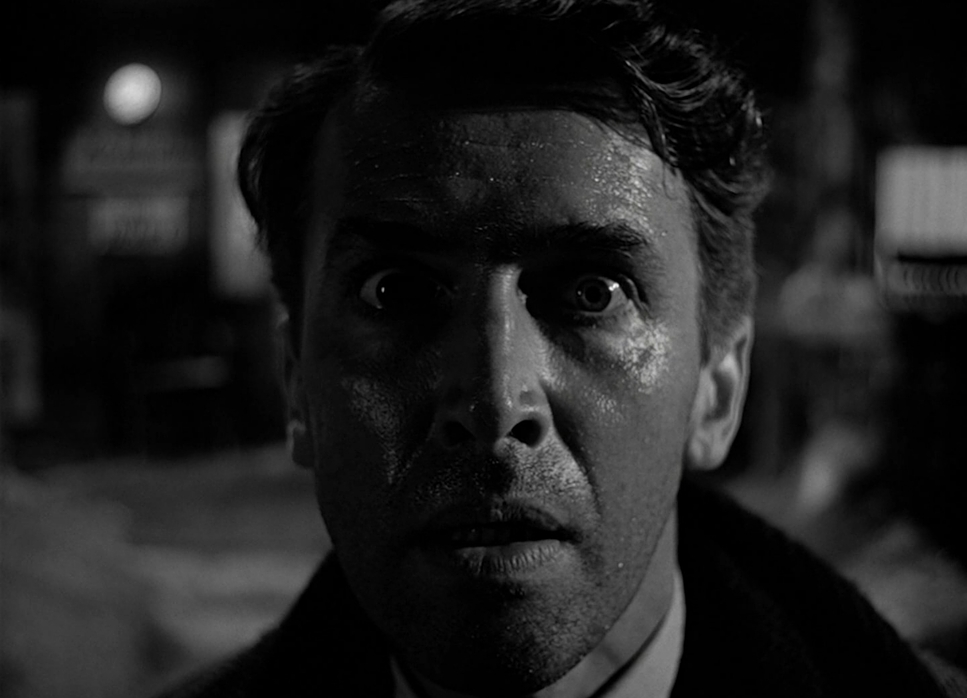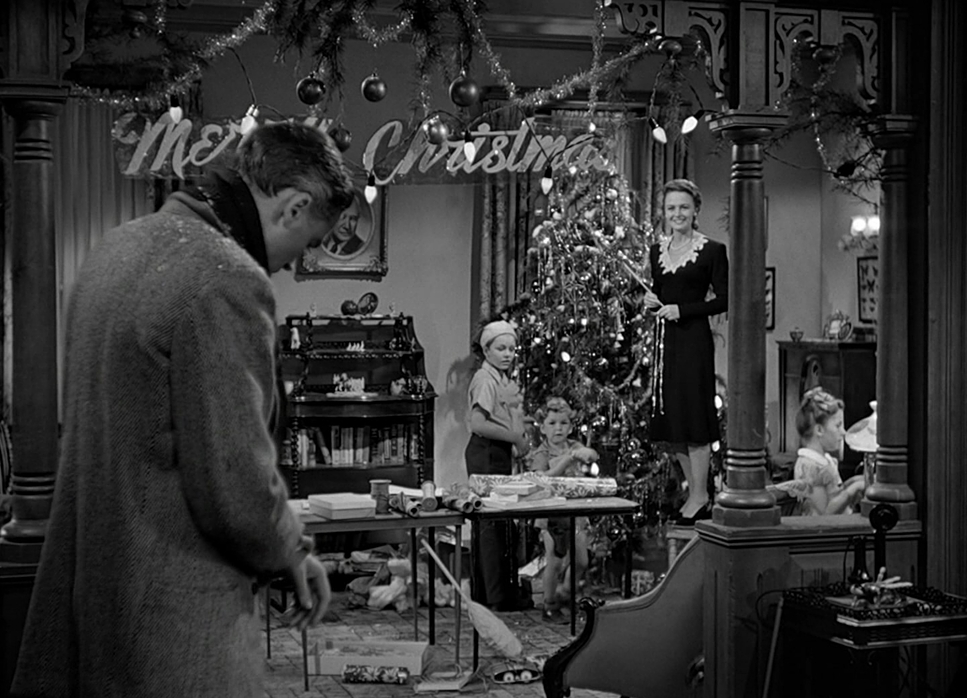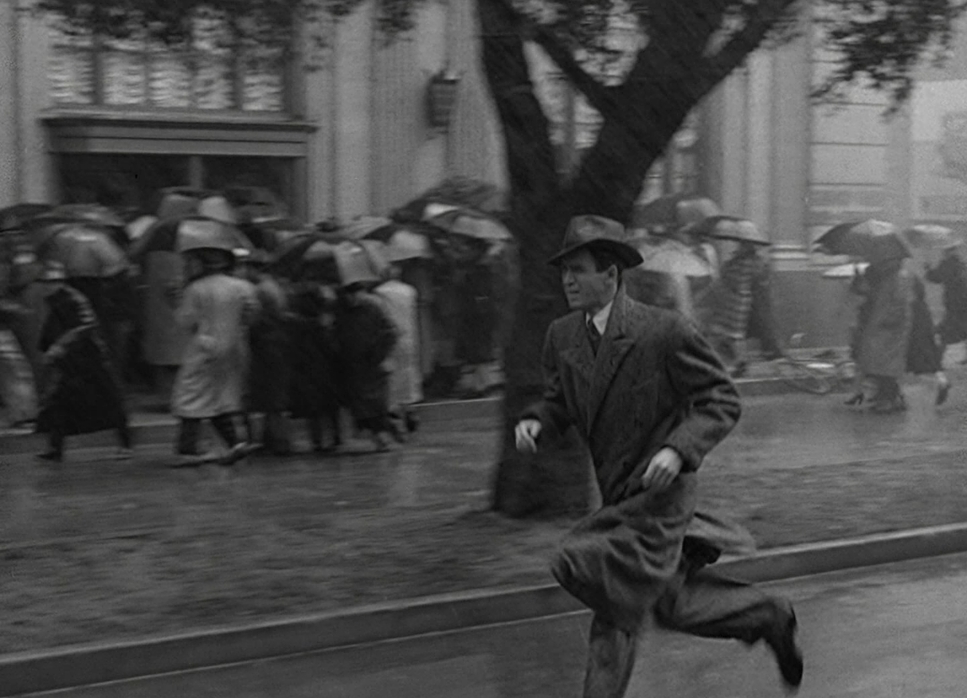Frank Capra’s 1946 masterpiece, It’s a Wonderful Life has cinematography that doesn’t just complement the narrative; it elevates it, making it an enduring piece of cinematic art.
About the Cinematographers

The brilliance of It’s a Wonderful Life owes much to the exceptional work of its cinematographers, Joseph Walker and Joseph Biroc. Joseph Walker was renowned for his collaborations with Frank Capra, bringing technical expertise and emotional depth to their projects. His innovative use of lighting and composition set the foundation for the film’s iconic aesthetic. Partway through production, Joseph Biroc took over the cinematography duties, seamlessly continuing Walker’s vision while adding his own touch. Their combined efforts created a visual language that is inseparable from the film’s soul, capturing George Bailey’s emotional journey with remarkable clarity.
Inspiration for the Cinematography

The cinematography drew inspiration from the socio-political landscape of post-World War II America. Themes of resilience, community, and the struggle between self-sacrifice and greed are visually woven into the fabric of the film. Bedford Falls, the idyllic small town where the story unfolds, is depicted with warmth and simplicity, embodying the American Dream.
🎬 A Note from Salik:
I often get asked how I achieve the dense, filmic look in my commercial work. The secret isn't just color grading—it's the starting point. I have finally released my personal Master LUT Pack—8 distinct looks based on real film.
These aren't simple presets; they were crafted using complex math, empirical data, and precise tetrahedral operations to ensure technical integrity. This is the exact collection I've built over the years and used on 200+ high-end commercials.
*Compatible with Davinci Resolve, Premiere Pro, and FCPX.
Interestingly, the film incorporates elements of German Expressionism, particularly in the alternate reality of Pottersville. High-contrast lighting and distorted compositions create a sense of chaos and despair, amplifying George’s internal turmoil. This stylistic choice was influenced by films like The Cabinet of Dr. Caligari, where lighting and set design reflect psychological states. The stark contrast between the harmonious Bedford Falls and the dystopian Pottersville underscores the film’s central message.
Camera Movements Used

The camera movements in It’s a Wonderful Life are subtle yet purposeful, designed to enhance the emotional depth of each scene. Capra, along with Walker and Biroc, employed techniques like dolly shots, pans, and zooms to create intimacy while maintaining dynamic energy. For example, during George Bailey’s breakdown on the bridge, the camera slowly pushes in, intensifying his feelings of isolation and despair. This deliberate movement draws us into his mental state, making the moment profoundly visceral.
In scenes brimming with joy and community—such as the bank run or the Christmas gathering—the camera uses wider, more inclusive shots with fluid tracking to capture the collective energy. The dance scene where George and Mary accidentally fall into the pool showcases this kinetic storytelling, with the camera following the motion to immerse the viewer fully in the spontaneity of the moment.
Compositions in the Film

The compositions are meticulously crafted to mirror George Bailey’s internal and external conflicts. Walker and Biroc used framing to symbolize his emotional states. In moments where George feels trapped, he’s often framed within doorways or against imposing structures, visually representing confinement. Contrastingly, scenes filled with hope feature open, expansive compositions, highlighting freedom and possibility.
A standout example is the depiction of Pottersville. The tight, cluttered frames convey a sense of chaos and disarray, reinforcing the dystopian atmosphere. In contrast, Bedford Falls is captured with symmetry and balance, reflecting the town’s harmony and interconnectedness. This deliberate juxtaposition enriches the narrative and deepens the emotional resonance.
Lighting Style

Lighting plays a pivotal role in establishing the film’s tone. The cinematographers employed a high-contrast lighting style reminiscent of film noir during the darker, more introspective moments. This is particularly evident in the scenes leading up to George’s confrontation on the bridge, where harsh shadows and stark lighting mirror his inner turmoil.
Conversely, scenes set in Bedford Falls often feature soft, diffused lighting, creating a warm and inviting atmosphere. This duality effectively mirrors the film’s thematic tension between despair and hope. The final Christmas sequence, bathed in a radiant glow, encapsulates the joy and redemption at the heart of the story.
Lensing and Blocking

The choice of lenses and the film’s blocking were instrumental in conveying its emotional depth. Wide-angle lenses are used in key moments to emphasize George’s connection—or lack thereof—to his environment. For instance, wide shots during joyful moments in Bedford Falls underscore the sense of community, while similar lenses in Pottersville create an unsettling distortion, highlighting George’s alienation.
Blocking also plays a critical role. Characters are positioned to reflect their relationships and emotional dynamics. In scenes of conflict, such as George’s confrontations with Mr. Potter, characters are deliberately spaced apart to symbolize their ideological divides. In contrast, the climactic Christmas scene brings characters together within the frame, visually emphasizing unity and togetherness.
Color and Technical Aspects

Although It’s a Wonderful Life was shot in black and white, its use of grayscale tones adds a textured, nuanced aesthetic. Bedford Falls is depicted with lighter shades, symbolizing optimism and community, while Pottersville is portrayed with darker tones, evoking despair and moral decay.
From a technical standpoint, the film was groundbreaking. The creation of an expansive Bedford Falls set allowed for innovative camera movements and staging. The use of a new type of synthetic snow reduced noise during filming, enhancing sound quality—a significant technical achievement at the time. Recording much of the dialogue live added an authentic layer to the performances, drawing the audience deeper into the story.
- Also Read: CINEMATOGRAPHY ANALYSIS OF LA DOLCE VITA (IN DEPTH)
- Also Read: CINEMATOGRAPHY ANALYSIS OF THE WAGES OF FEAR (IN DEPTH)
Browse Our Cinematography Analysis Glossary
Explore directors, cinematographers, cameras, lenses, lighting styles, genres, and the visual techniques that shape iconic films.
Explore Glossary →